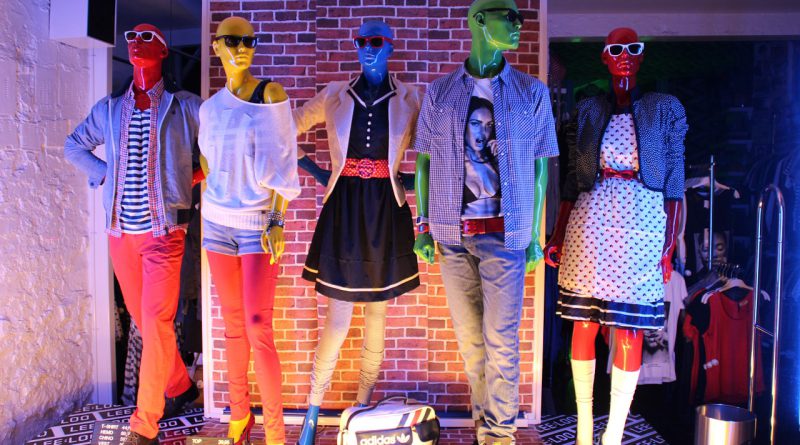Fashion design…
Fashion design is the art of applying design, aesthetics, clothing construction and natural beauty to clothing and its accessories. It is influenced by culture and different trends, and has varied over time and place. “A fashion designer creates clothing, including dresses, suits, pants, and skirts, and accessories like shoes and handbags, for consumers. He or she can specialize in clothing, accessory, or jewelry design, or may work in more than one of these areas.”[1
Fashion designers
Fashion designers work in a variety of different ways when designing their pieces and accessories such as rings, bracelets, necklaces and earrings. Due to the time required to put a garment out in market, designers must anticipate changes to consumer desires. Fashion designers are responsible for creating looks for individual garments, involving shape, color, fabric, trimming, and more.[2]
Designers conduct research on fashion trends and interpret them for their audience. Their specific designs are used by manufacturers. This is the essence of a designer’s role; however, there is variation within this that is determined by the buying and merchandising approach. When thinking of product quality control budget retailers use inexpensive fabrics to have a quick turn around on production, but high-end retailers will ensure that the best available fabrics are used and lots of time is utilized.[3]
Fashion designers attempt to design clothes which are functional as well as aesthetically pleasing. They consider who is likely to wear a garment and the situations in which it will be worn, and they work within a wide range of materials, colors, patterns and styles. Though most clothing worn for everyday wear falls within a narrow range of conventional styles, unusual garments are usually sought for special occasions such as evening wear or party dresses.
Some clothes are made specifically for an individual, as in the case of haute couture or bespoke tailoring. Today, most clothing is designed for the mass market, especially casual and every-day wear are called ready to wear or known as fast fashion.
Structure
Fashion designers may work full-time for one fashion house, as ‘in-house designers’, which owns the designs, or they work alone or as part of a team. Freelance designers work for themselves, selling their designs to fashion houses, directly to shops, or to clothing manufacturers. Most fashion designers set up their own labels, under which their designs are marketed. While others are self-employed and design for individual clients. Other high-end fashion designers cater to specialty stores or high-end fashion department stores. These designers create original garments, as well as those that follow established fashion trends. Most fashion designers, however, work for apparel manufacturers, creating designs of men’s, women’s, and children’s fashions for the mass market. Large designer brands which have a ‘name’ as their brand such as Abercrombie & Fitch, Justice, or Juicy are likely to be designed by a team of individual designers under the direction of a design director.
Designing a garment
Fashion designers work in different ways. Some sketch their ideas on paper, while others drape fabric on a dress form, another term for mannequin. Some designers work along with certain apps that can help connect all ideas together and expand their thoughts on a design. When a designer is completely satisfied with the fit of the toile (or muslin), they will consult a professional pattern maker who then makes the finished, working version of the pattern out of card or via a computer program. Finally, a sample garment is made up and tested on a model to make sure it is an operational outfit. Fashion design is expressive, the designers create art that may be functional or non-functional.
History
The Chéruit salon on Place Vendôme in Paris, 1910
Main article: History of fashion design
Fashion design is generally considered to have started in the 19th century with Charles Frederick Worth who was the first designer to have his label sewn into the garments that he created. Before the former draper set up his maison couture (fashion house) in Paris, clothing design and creation was handled by largely anonymous seamstresses, and high fashion descended from that worn at royal courts. Worth’s success was such that he was able to dictate to his customers what they should wear, instead of following their lead as earlier dressmakers had done. The term couturier was in fact first created in order to describe him. While all articles of clothing from any time period are studied by academics as costume design, only clothing created after 1858 is considered as fashion design.[4]
It was during this period that many design houses began to hire artists to sketch or paint designs for garments. The images were shown to clients, which was much cheaper than producing an actual sample garment in the workroom. If the client liked their design, they ordered it and the resulting garment made money for the house. Thus, the tradition of designers sketching out garment designs instead of presenting completed garments on models to customers began as an economy.
Types of fashion
Garments produced by clothing manufacturers fall into three main categories, although these may be split up into additional, different types.
Haute couture
Main article: Haute couture
Until the 1950s, fashion clothing was predominately designed and manufactured on a made-to-measure or haute couture basis (French for high-sewing), with each garment being created for a specific client. A couture garment is made to order for an individual customer, and is usually made from high-quality, expensive fabric, sewn with extreme attention to detail and finish, often using time-consuming, hand-executed techniques. Look and fit take priority over the cost of materials and the time it takes to make.[5][6] Due to the high cost of each garment, haute couture makes little direct profit for the fashion houses, but is important for prestige and publicity.[7]
Ready-to-wear (prêt-à-porter)
Main article: Ready-to-wear
Ready-to-wear, or prêt-à-porter, clothes are a cross between haute couture and mass market. They are not made for individual customers, but great care is taken in the choice and cut of the fabric. Clothes are made in small quantities to guarantee exclusivity, so they are rather expensive. Ready-to-wear collections are usually presented by fashion houses each season during a period known as Fashion Week. This takes place on a citywide basis and occurs twice a year. The main seasons of Fashion Week include: spring/summer, fall/winter, resort, swim, and bridal.
Half-way garments are an alternative to ready-to-wear, “off-the-peg”, or prêt-à-porter fashion. Half-way garments are intentionally unfinished pieces of clothing that encourages co-design between the “primary designer” of the garment, and what would usually be considered, the passive “consumer”.[8] This differs from ready-to-wear fashion, as the consumer is able to participate in the process of making and co-designing their clothing. During the Make{able} workshop, Hirscher and Niinimaki found that personal involvement in the garment-making process created a meaningful “narrative” for the user, which established a person-product attachment and increased the sentimental value of the final product.[8]
Otto von Busch also explores half-way garments and fashion co-design in his thesis, “Fashion-able, Hacktivism and engaged Fashion Design”.[9]
Mass market
Main article: Mass market
Currently, the fashion industry relies more on mass-market sales. The mass market caters for a wide range of customers, producing ready-to-wear garments using trends set by the famous names in fashion. They often wait around a season to make sure a style is going to catch on before producing their versions of the original look. To save money and time, they use cheaper fabrics and simpler production techniques which can easily be done by machines. The end product can, therefore, be sold much more cheaply.[10][11][12]
There is a type of design called “kutch” originated from the German word kitschig, meaning “trashy” or “not aesthetically pleasing”. Kitsch can also refer to “wearing or displaying something that is therefore no longer in fashion”.[13]

